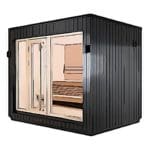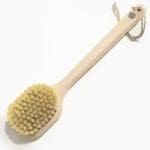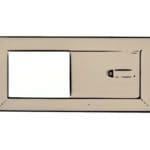How a Sauna Works: Finding the Löyly Pocket Through Heat Transfer and a Convective Loop
This is part one from our email masterclass, ’10 Days to SaunaMeistery’ that will prepare you to buy or design a sauna. Whether you’re new to sauna or you were born in one (it’s a thing) we guarantee it will improve your decisions and payoff for many years. Oh, and it’s free! If you find this useful, sign up at the bottom of this post for the next nine modules and attachments.
Day 2: Sauna Principles, Laws of Loyly, and Constraints
Day 3: The No Constraint Sauna
Day 4: Take Stock – Your Constraints, Assets, and Non-Negotiables
Day 5: Sauna Types
Day 6: Sauna Heaters
Day 7: Most Common Mistakes
Day 8: Materials
Day 9: Accessories and Add-Ons
Day 10: Buying or Building a Sauna
The enchanting alchemy of heat transfer in a sauna comes alive through the harmonious interplay of three distinct forces: the radiant warmth that dances like sunlight, the conductive energy that equalizes temperatures between surfaces, and the convective currents that gracefully circulate the heat and steam.
No matter what sauna you are in the market for, learning how heat is transferred through it will help you to make better buying and design decisions.
Once you understand these flows you could almost stop there: you’ll be able to answer your own questions about bench height, ventilation, insulation, radiant barriers, and hot room dimensions. You’ll be able to determine the best sauna style and heater design for your budget.
Sound good? Let’s go ahead and fire up our proverbial sauna.
Radiant Heat Transfer: The Direct Sun of Sauna Heat
Radiant heat transfer is the cozy warmth you feel from a distance, such as sunlight on your skin.
In a sauna, this warmth originates from the fire or heating elements and spreads throughout the space as waves. Just as with sunlight, you need a direct line of sight to the heat source to get the full radiant impact. Knowing this will be useful when you want to prevent too much harsh radiant heat from your heater.
Indeed, too much radiant heat from your heater can be unpleasant or even painful. Picture yourself too close to a blazing bonfire on a cold night. You approach the fire to warm up, but the radiant heat becomes overwhelming for your face, while the covered or turned-away parts of your body remain chilly. In a sauna, the aim is to attain comforting warmth without the severity of being too close to a fire.
This comforting warmth is achieved (in part) by turning the entire sauna into a gentle source of radiant heat.
As your sauna heats up, surfaces like wood and rocks get hotter than your skin and radiate heat to your body. Now you have ‘surround-sound’ heat that is more gentle than the heat radiating from metal surfaces on a sauna heater. This is why it’s important to let a sauna fully heat up before entering. Until the rocks and walls are hot, the only radiant heat you will experience is directly from the heater.
In fact, if walls and ceilings are cooler than your skin – your body will radiate energy TO them instead of the other way around. In a well-designed sauna, radiant heat will not be the primary way we experience heat after the convective currents kick in, but subtle radiant heat from all directions is a precursor to a really great sauna.
Many people have observed that excessive radiant heat in a sauna is a frequent problem and concluded that the goal of sauna design is to eliminate radiant heat from the heater. For most people, this would be a step too far, and finding a good balance should be the goal for most of us. Remember that, like sun exposure, people have different tolerances for radiant heat in a sauna.
Increasing Radiant Heat: For the best radiant heat in a sauna, focus on heating the stones and walls. Allow the sauna ample time to heat up before entering—typically 1-2 hours for full readiness. Insulated walls and ceilings also enhance the wood’s ability to heat up and radiate energy back to your body.
Decreasing Radiant Heat: If you encounter harsh radiant heat in a sauna, it likely originates directly from the heater. Consider adding heat shields, more rocks, or a rock basket-style heater to mitigate the issue. Moving away from the heater also works.
Conductive Heat Transfer: The Great Balancer
Conductive heat transfer spreads radiant heat throughout the sauna through objects.
In a wood-fired sauna stove, the radiant heat from the fire transfers into the metal and then from the metal to the rocks primarily through conduction. Similarly, in an electric sauna stove, the heat from the elements conducts into the rocks.
These sauna rocks store heat and radiate it more slowly and gently than the metal, providing a crucial balance to the sauna experience. A good mass of rocks offers plenty of latent heat storage. In a way, conduction turns rocks and wood in the sauna into sauna batteries.
Remember that radiant energy requires a direct line of sight to transfer heat. That means only some walls, ceilings, and benches will receive direct radiant heat from the stove. Luckily, conductive energy will move a lot of this energy through the materials.
Thus far, we’ve explored the concepts of radiant and conductive heat, so what’s the outcome?
We now have direct radiant heat emanating from the heater’s metal surface, as well as a gentler warmth originating from the sauna rocks, which were heated through conduction. Both of these sources disperse energy across the sauna, as long as there is an unobstructed line of sight between them. Consequently, the walls, ceiling, and benches that have been warmed by radiant energy from the stove and rocks proceed to heat the surrounding surfaces via conduction.
Thanks to radiant and conductive energy transfer, we now have a sauna environment with relatively uniform temperatures throughout, where the walls, benches, stones, and ceiling store sufficient heat to emit energy toward the sauna users from all directions.
That’s a great start, but the life of this sauna party is convective heat. She shows up late, but you know things are going to get interesting when she arrives.
Convective Heat Transfer and Loop: The Soul of The Sauna
Just when you think the sauna experience has reached its peak, convective heat transfer bursts onto the scene fashionably late and ready to dance. This lively character knows how to keep things interesting and ensures everyone gets a taste of warmth, fresh air, and steam.
Convection begins in a sauna when air around the heater becomes less dense as it’s heated, causing the air to rise.
When a sauna heater and rocks are hot enough, convection swiftly moves that hot air up toward the ceiling. There’s now a vacuum affect that brings fresh air into the sauna from a strategically placed intake vent. In a well-designed sauna, this is the start of a convective loop that draws fresh air through the heater, then up along the ceiling to the top benches on the opposite wall.
After delighting anyone on those benches, the hot air begins to cool and fall. From there it will either exit the sauna through the exhaust vent or move along the floor back to the sauna heater to blend seamlessly with fresh air – setting the stage for the main event.
When you put water on the rocks in a sauna, Convective Heat takes center stage. Pouring water on the rocks generates steam, which increases the humidity and heat sensation in the sauna. The hot steam rises while the cooler air sinks, creating a convection current that circulates the heat more evenly throughout the sauna. This process helps distribute the heat and maintain a comfortable temperature inside the sauna.
Convection in a sauna can either lead to heat stratification (bad) or a convective loop (good). Tomorrow we’ll show you how exactly how to harness convective currents in your sauna.
10 Days To SaunaMeistery
Learn everything you need to know before buying a sauna, and nothing you don’t. The only sauna guide guaranteed to improve your purchase and design decisions.


 Prebuilt
Prebuilt Sauna Brushes
Sauna Brushes Vents
Vents